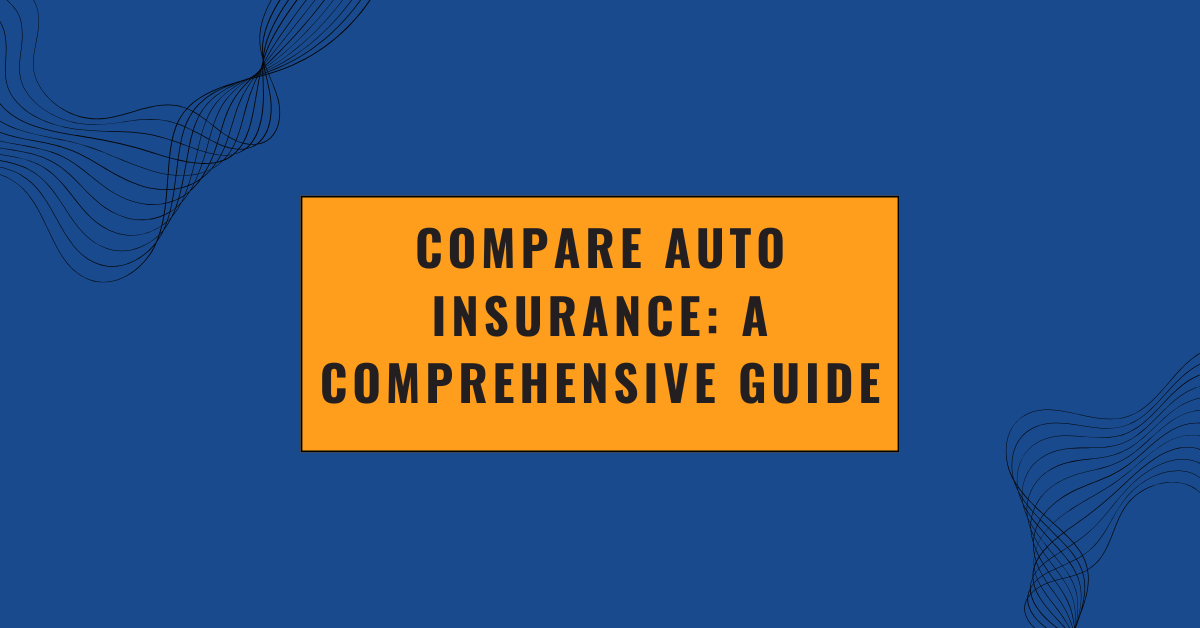compare auto insurance: is an essential part of vehicle ownership, providing financial protection against accidents, theft, and other unforeseen events. With numerous insurance companies and policies available, choosing the right coverage can be overwhelming. This article aims to simplify the process by comparing various aspects of auto insurance, helping you make an informed decision.
What is Auto Insurance?
Auto insurance is a contract between you and an insurance company. In exchange for premium payments, the insurer provides coverage for specific risks related to your vehicle. Coverage typically includes liability, collision, comprehensive, medical payments, and uninsured/underinsured motorist protection.
Types of Auto Insurance Coverage
- Liability Coverage
- What it Covers: Liability insurance covers damages and injuries you cause to others in an accident.
- Why It’s Important: Most states require a minimum amount of liability coverage by law.
- Collision Coverage
- What it Covers: Pays for repairs to your car after a collision, regardless of who is at fault.
- Why It’s Important: Essential for protecting your investment in your vehicle.
- Comprehensive Coverage
- What it Covers: Protects against non-collision-related damages, such as theft, vandalism, or natural disasters.
- Why It’s Important: Provides peace of mind for unexpected events.
- Personal Injury Protection (PIP)
- What it Covers: Medical expenses for you and your passengers, regardless of fault.
- Why It’s Important: Mandatory in some states and valuable for covering hospital bills and lost wages.
- Uninsured/Underinsured Motorist Coverage
- What it Covers: Protects you if you’re hit by a driver with little or no insurance.
- Why It’s Important: Ensures financial protection in accidents involving uninsured drivers.
Factors Affecting Auto Insurance Rates
- Age and Gender
- Younger drivers and males typically face higher premiums due to higher accident rates.
- Driving Record
- A clean driving history often results in lower rates.
- Traffic violations and accidents increase premiums.
- Location
- Urban areas with higher traffic and theft rates tend to have higher premiums.
- Vehicle Type
- Luxury cars and sports models usually cost more to insure.
- Vehicles with advanced safety features may qualify for discounts.
- Credit Score
- In some states, insurers use credit scores to assess risk, with higher scores leading to lower premiums.
- Coverage Limits and Deductibles
- Higher coverage limits and lower deductibles increase premiums.
Read More : The Role of eagent farmers in Empowering Farmers: Revolutionizing Agriculture in the Digital Age
Top Auto Insurance Companies in the US
- State Farm
- Known for excellent customer service and a wide range of coverage options.
- Offers discounts for good drivers and multiple policies.
- Geico
- Competitive rates and a user-friendly app.
- Discounts available for federal employees, military personnel, and students.
- Progressive
- Unique offerings like Snapshot, which rewards safe driving habits.
- Flexible coverage options.
- Allstate
- Provides accident forgiveness and multiple discount programs.
- Excellent roadside assistance.
- USAA
- Exclusively for military members and their families.
- Highly rated for customer satisfaction and affordability.
How to Compare Auto Insurance Policies
- Assess Your Needs
- Determine the type of coverage you require based on your vehicle, driving habits, and budget.
- Get Multiple Quotes
- Use online comparison tools or contact agents to obtain quotes from different insurers.
- Evaluate Coverage Options
- Look beyond price to compare coverage limits, exclusions, and additional benefits.
- Check Discounts
- Many insurers offer discounts for bundling policies, being a good student, or having a clean driving record.
- Read Customer Reviews
- Online reviews provide insight into customer satisfaction and claim handling.
Tips for Lowering Your Auto Insurance Premiums
- Maintain a Clean Driving Record
- Avoid accidents and traffic violations to qualify for lower rates.
- Increase Your Deductible
- A higher deductible reduces your premium but increases out-of-pocket expenses in case of a claim.
- Bundle Policies
- Combine auto insurance with home or renters insurance for discounts.
- Take Advantage of Discounts
- Ask your insurer about discounts for safe driving, good grades, or installing safety features in your car.
- Shop Around
- Regularly compare policies to ensure you’re getting the best deal.
Common Auto Insurance Myths
- Red Cars Cost More to Insure
- Color doesn’t affect insurance rates; factors like make, model, and usage do.
- Older Cars Don’t Need Comprehensive Coverage
- While liability coverage is mandatory, comprehensive coverage can still be valuable for older cars in specific scenarios.
- Credit Score Doesn’t Matter
- In many states, credit score is a key factor in determining rates.
- Minimum Coverage is Sufficient
- State minimums often don’t provide enough protection in serious accidents.
Conclusion : compare auto insurance
Choosing the right auto insurance requires careful consideration of your needs, budget, and the coverage options available. By understanding the various types of coverage, factors affecting premiums, and ways to save, you can find a policy that offers the best value and protection. Regularly reviewing and comparing policies ensures you’re always getting the most competitive rates.

